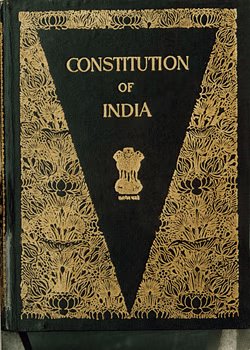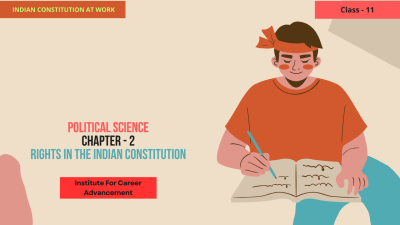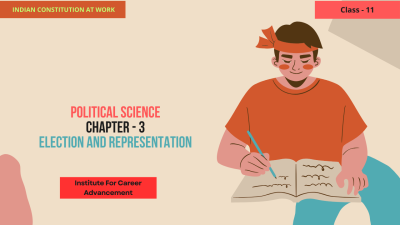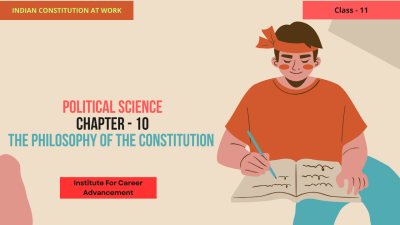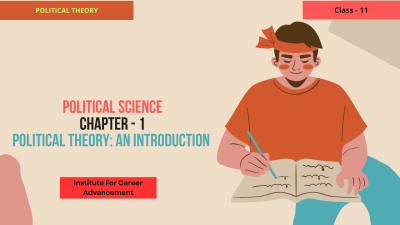The End of Bipolarity - Class 12
The End of Bipolarity refers to the collapse of the Soviet Union and the end of the Cold War, which marked the transition from a world dominated by two superpowers (the United States and the Soviet Union) to a more multipolar international system. This shift had profound implications for global politics, economics, and security. Key features of the end of bipolarity: Collapse of the Soviet Union: The Soviet Union, a superpower since World War II, experienced internal turmoil and economic decline, leading to its eventual collapse in 1991. End of the Cold War: The Cold War, a period of ideological and geopolitical rivalry between the United States and the Soviet Union, came to an end with the collapse of the Soviet Union. Emergence of new powers: The end of bipolarity gave rise to new powers, such as China, India, and the European Union, which have become increasingly influential on the global stage. Shift in international relations: The end of bipolarity led to a shift in international relations, with a greater emphasis on cooperation, multilateralism, and the role of international organizations. Economic globalization: The end of bipolarity coincided with the acceleration of economic globalization, as countries became more interconnected through trade, investment, and technology. Implications of the end of bipolarity: Increased instability: The transition to a multipolar system has led to increased instability and uncertainty in some regions of the world. New challenges: New challenges, such as climate change, terrorism, and pandemics, have emerged as global issues that require international cooperation. Opportunities for cooperation: The end of bipolarity has also created opportunities for cooperation between countries on issues of mutual concern. The end of bipolarity was a significant historical event that continues to shape the global landscape today. Understanding this period is essential for understanding the current state of international relations and the challenges and opportunities facing the world. দ্বিপক্ষীয়তার সমাপ্তি বলতে বোঝায় সোভিয়েত ইউনিয়নের পতন এবং শীতল যুদ্ধের সমাপ্তি, যা দুটি পরাশক্তি (মার্কিন যুক্তরাষ্ট্র এবং সোভিয়েত ইউনিয়ন) দ্বারা প্রভাবিত বিশ্ব থেকে আরও বহু-মেরু আন্তর্জাতিক ব্যবস্থায় রূপান্তরকে চিহ্নিত করে। এই পরিবর্তন বিশ্ব রাজনীতি, অর্থনীতি এবং নিরাপত্তার উপর গভীর প্রভাব ফেলেছিল। দ্বিপক্ষীয়তার সমাপ্তির মূল বৈশিষ্ট্যগুলিঃ সোভিয়েত ইউনিয়নের পতনঃ দ্বিতীয় বিশ্বযুদ্ধের পর থেকে পরাশক্তি সোভিয়েত ইউনিয়ন অভ্যন্তরীণ অস্থিরতা এবং অর্থনৈতিক পতনের সম্মুখীন হয়, যার ফলে 1991 সালে এর চূড়ান্ত পতন ঘটে। শীতল যুদ্ধের সমাপ্তিঃ শীতল যুদ্ধ, মার্কিন যুক্তরাষ্ট্র এবং সোভিয়েত ইউনিয়নের মধ্যে আদর্শিক এবং ভূ-রাজনৈতিক প্রতিদ্বন্দ্বিতার একটি সময়, সোভিয়েত ইউনিয়নের পতনের সাথে শেষ হয়েছিল। নতুন শক্তির উত্থানঃ দ্বিপক্ষীয়তার অবসান চীন, ভারত এবং ইউরোপীয় ইউনিয়নের মতো নতুন শক্তির জন্ম দিয়েছে, যা বিশ্ব মঞ্চে ক্রমবর্ধমান প্রভাবশালী হয়ে উঠেছে। আন্তর্জাতিক সম্পর্কের পরিবর্তনঃ দ্বিপক্ষীয়তার অবসান আন্তর্জাতিক সম্পর্কের পরিবর্তনের দিকে পরিচালিত করে, সহযোগিতা, বহুপাক্ষিকতা এবং আন্তর্জাতিক সংস্থাগুলির ভূমিকার উপর আরও বেশি জোর দেওয়া হয়। অর্থনৈতিক বিশ্বায়নঃ দ্বিপক্ষীয়তার সমাপ্তি অর্থনৈতিক বিশ্বায়নের ত্বরণের সাথে মিলে যায়, কারণ দেশগুলি বাণিজ্য, বিনিয়োগ এবং প্রযুক্তির মাধ্যমে আরও আন্তঃসংযুক্ত হয়ে ওঠে। দ্বিপদীত্বের সমাপ্তির প্রভাবঃ অস্থিরতা বৃদ্ধিঃ বহু-মেরু ব্যবস্থায় রূপান্তরের ফলে বিশ্বের কিছু অঞ্চলে অস্থিরতা এবং অনিশ্চয়তা বৃদ্ধি পেয়েছে। নতুন চ্যালেঞ্জঃ জলবায়ু পরিবর্তন, সন্ত্রাসবাদ এবং মহামারীর মতো নতুন চ্যালেঞ্জগুলি আন্তর্জাতিক সমস্যা হিসাবে আবির্ভূত হয়েছে যার জন্য আন্তর্জাতিক সহযোগিতা প্রয়োজন। সহযোগিতার সুযোগঃ দ্বিপক্ষীয়তার অবসান পারস্পরিক উদ্বেগের বিষয়গুলিতে দেশগুলির মধ্যে সহযোগিতার সুযোগও তৈরি করেছে। দ্বিপক্ষীয়তার সমাপ্তি একটি উল্লেখযোগ্য ঐতিহাসিক ঘটনা ছিল যা আজও বিশ্ব ভূদৃশ্যকে রূপ দিতে থাকে। আন্তর্জাতিক সম্পর্কের বর্তমান অবস্থা এবং বিশ্বের সামনে চ্যালেঞ্জ ও সুযোগগুলি বোঝার জন্য এই সময়কালটি বোঝা অপরিহার্য।
English
Last updated
Wed, 27-Nov-2024







